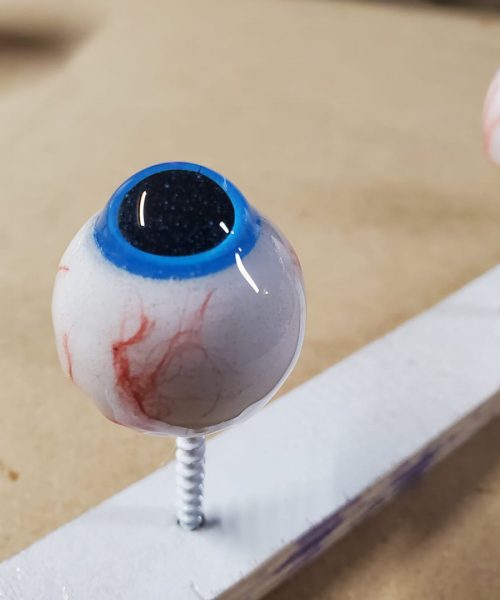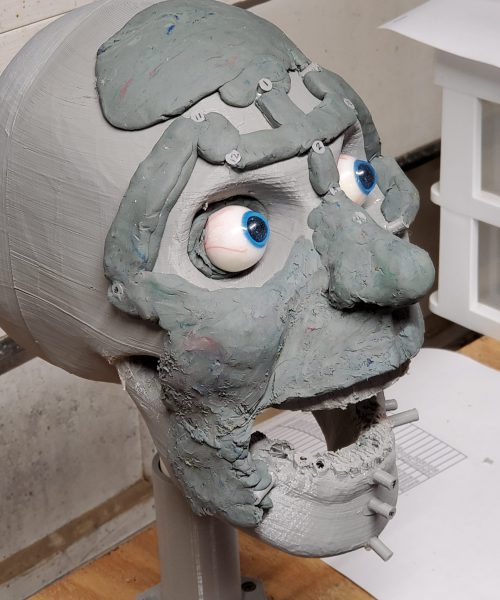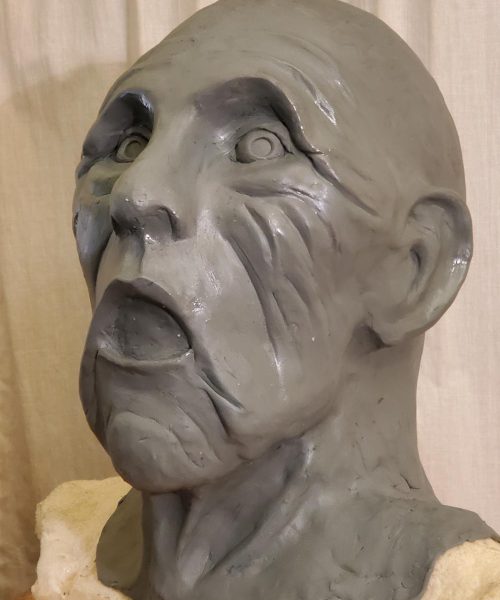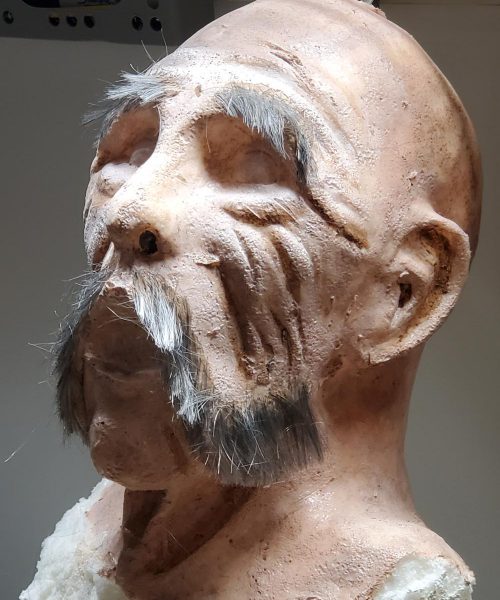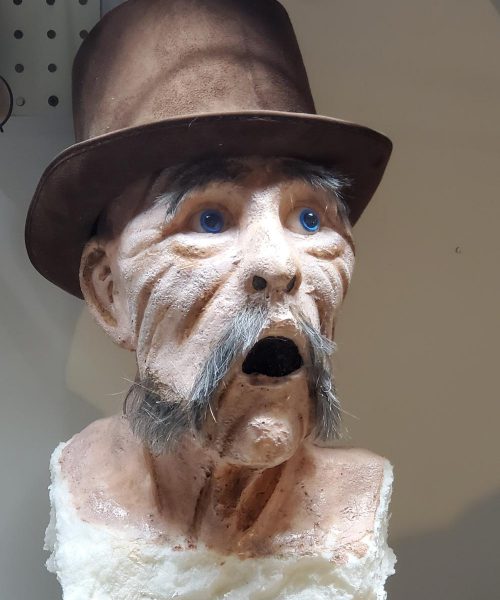I usually spend my autumn weekends at the Kansas City Renaissance Festival, working for a friend in her booth selling incense and fragrance oils. In 2020, with a covid quarantine in effect pretty much everywhere and the festival canceled, I had some extra time on my hands come Halloween. That meant I was able to devote myself to a yard display I usually wouldn’t have time for.
The concept for the display was to have a gentleman in Victorian-era clothing holding a lantern and looking surprised or frightened, being menaced by a giant pumpkin scarecrow. (The lantern and scarecrow are for another post.)
It started with eyeballs: 15mm wooden balls, 11mm doll irises, wooly nylon thread for the veins, and epoxy for the shine. Pretty standard stuff but they look disconcertingly real. (Consulting an anatomy text, I learned that eyeballs aren’t as big as they seem.)
For the head, I began with a 3D printed skull. It started as an STL file created from a man’s CT scan done for a sinus surgery. That skull was too anatomically correct – there were structures that would have taken a good deal of clay to fill in (like the cheekbones), so I loaded the file into sculpting software where I filled those voids in and softened some of the edges. I also lengthened and narrowed the skull just a little: I wanted “Herman” to be tall and thin.
After cutting the lower jaw free and hot-gluing it back into place in the correct position, I mounted the skull onto a pole, applied tissue depth markers and started laying on an oil-based modeling clay (the same technique used by forensic reconstruction artists.) Building the basic structures was easy, getting the final sculpt was not: the ears were problematic and, let’s face it, I’ve never been that good at ears to begin with. Because I wasn’t sure about the mold material, I went with the safe assumption that the mold would be rigid, so there could be no undercuts that would lock the piece into the mold.
The head was molded in silicone, and a rigid front/back shell of plaster bandages kept the shape when the head model was removed. The neck and shoulders were created with a much denser (and cheaper) spray foam, and put in place inside the mold after pouring 3# A/B polyurethane foam for the head.
Herman was meant to be viewed from a distance so the features, details and makeup are exaggerated. Herman was painted using acrylics mixed with liquid latex for the base color, and detailed using standard theatrical creme makeup. Mutton chop sideburns and eyebrows were glued into place (I ran out of time to hand-punch the hair) and a felt top hat completed the look.
Next up: The Body

